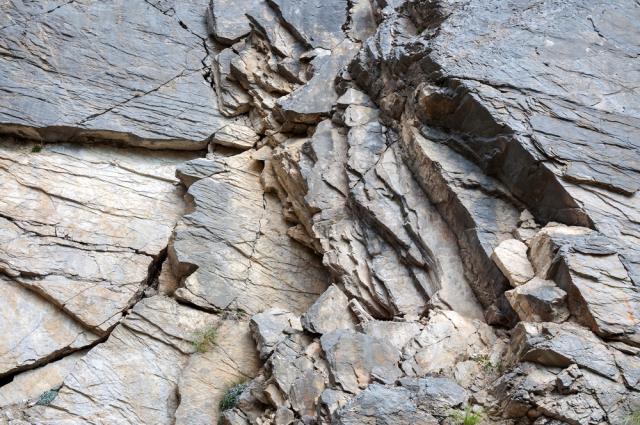
Companies are targeting shale resources in eastern India. (Source: Vladimir Tronin/Shutterstock.com)
Essar Oil & Gas Exploration and Production Ltd. and Great Eastern Energy Corp. Ltd. (GEECL) are chasing shale gas leads they discovered while developing coalbed methane (CBM) fields in the Raniganj East and Raniganj South blocks, respectively, in eastern India.
The companies have lined up plans to drill 20 exploration wells in each of the concessions to assess the quantity of shale gas reserves.
Both have approached the federal environment ministry for approval to drill exploration wells in their respective concessions up to 3,000 m (9,842 ft) in depth along with development wells for CBM, starting in second-half 2019.
Preliminary geophysical studies indicate the presence of commercial volumes of shale gas resources in the Indo-Gangetic Basin’s Raniganj East and Raniganj South blocks onshore, the companies said.
Essar Oil and Gas discovered a “subsurface shale layer in the depth up to 3,000 meters (9,842 ft)” during the CBM drilling campaign in the Raniganj East concession, said Vilas Tawde, the company’s managing director.
A study prepared by the U.S.-based Advanced Resources International Inc. (ARI) indicated in-place shale gas resources of about 7.7 trillion cubic feet (Tcf) below CBM reserves in the Raniganj East Block, Tawde said.
The company is expecting recoverable reserves of at least 1.5 Tcf of shale gas from the concession. “If this exploration is successful, we plan to drill around 220 to 250 wells that will require an investment of ₹7,000 crore [US$1 billion],” he added.
The proposed 20 exploration wells will be drilled alongside the ongoing 630 development well campaign for CBM in Raniganj East. The plan includes building eight gas gathering stations with a capacity of 0.45 million standard cubic meters per day (MMscf/d) and one main compressor station of 3 MMscm/d.
Development drilling is expected to increase CBM production from the block to 5 MMscm/d, from the current level of 1.7 MMscm/d.
The Raniganj East Block has estimated total CBM reserves of 28 Bcm (993 Bcf).
London Stock Exchange-listed GEECL is equally upbeat on the prospects for shale gas reserves in the neighboring Raniganj South Block.
GEEL plans to start drilling 20 exploration wells by June, said Prashant Modi, the company’s managing director chairman. “Depending on the results obtained and analyzed from the wells, we thereafter intend to drill an optimum number of pilot production wells,” he said.
The company chief further added shale gas resources could be explored and developed cost-effectively in tandem with the ongoing CBM development program through the sharing of surface and other infrastructure facilities.
A study prepared by ARI put the estimate of in-place shale gas resources in Raniganj South at about 6.3 Tcf, of which at least 1.689 Tcf are recoverable reserves.
Exploration wells will be drilled during the ongoing 200 development well campaign for CBM in Raniganj South, which aims to increase production to about 25 MMscf/d from the current level of 18.27 MMscf/d.
Raniganj South is estimated to contain in-place CBM resources of 2.62 Tcf.
Raniganj and nearby areas in Damodar Basin appear to have a significant quantity of shale gas resources. ONGC Ltd. earlier discovered shale gas leads in a well (RNSG-1) drilled to a depth of 2,000 m (6,562 ft) at Icchapur village in the Raniganj Block. The company encountered the Barren Measure shale formation from 985 m (3,232 ft) to 1,843 m (6,047 ft).
Encouraged by these discoveries, the Directorate General of Hydrocarbons has all operators in the region—Essar Oil and Gas, GEEL and ONGC—and the Central Institute of Mining and Fuel Research collaborating to establish a synergy in development of shale gas prospects in the Raniganj concessions.
The Indian government is also encouraging the upstream companies to develop potential unconventional hydrocarbons, including shale gas, shale oil and hydrates, in existing production-sharing contracts (PSCs) for oil and gas and CBM blocks.
The new policy guidelines, approved in March 2018, enable the realization of prospective hydrocarbon reserves in the existing PSCs which otherwise remain unexplored.
The fiscal and contractual terms of the policy provide for ring-fencing of petroleum operations and cost recovery of new hydrocarbon discoveries in PSC blocks. An additional 10% rate of profit petroleum/production level payment (PLP) in case of CBM contract, over and above the existing rate of profit petroleum/PLP would be shared with government on new discoveries.
India is estimated to contain potential shale gas resources of between 300 Tcf and 2,100 Tcf in six sedimentary basins in the country, Schlumberger said in a report.
Recommended Reading
Apollo to Buy $1B Stake in BP’s Trans Adriatic Pipeline
2024-09-16 - Apollo will purchase the non-controlling interest from BP subsidiary BP Pipelines TAP Ltd. for $1 billion as the oil major continues to make progress on a divestment target of up to $3 billion.
Firms Blast ‘Conflict-ridden’ Martin Midstream Deal, Launch Counteroffer
2024-07-11 - Two New York-based capital firms say a May proposal by Martin Resource Management to buy Martin Midstream for $100 million represents a “below market and conflict-ridden proposal,” while the firm’s own offer has been rebuffed.
Beyond Permian? Breaking Down E&Ps’ Second Half M&A Prospects
2024-07-22 - From Permian Resources and Diamondback Energy to Matador Resources and Civitas Resources, analysts weigh in on upstream companies’ M&A mindset as second-quarter earnings season gets underway.
Permian Resources Bolts-on Oxy’s Delaware Basin Assets for $820MM
2024-07-29 - Permian Resources will add Occidental Petroleum’s Barilla Draw assets in an $817.5 million deal as Oxy prepares to pay down debt for its pending $12 billion acquisition of CrownRock LP.
Vital Energy, Northern to Buy Delaware E&P Point Energy for $1.1B
2024-07-28 - Vital Energy will buy an 80% stake in Point Energy Partners’ Delaware Basin assets for about $820 million, with Northern Oil and Gas acquiring the remaining 20% interest for $220 million.
Comments
Add new comment
This conversation is moderated according to Hart Energy community rules. Please read the rules before joining the discussion. If you’re experiencing any technical problems, please contact our customer care team.





